Source: treehugger.com
Published: January 9, 2013
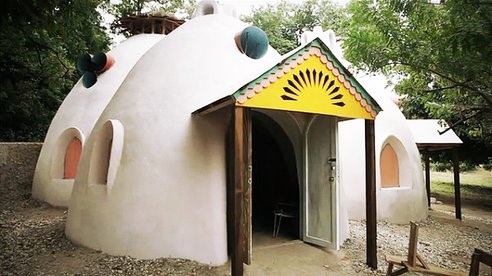
© Konbit Shelter

Coverage of Haiti’s 2010 earthquake disaster may have dwindled in the news, but rebuilding efforts are still slowly continuing, running the gamut from shelters made from tires, shipping containers and recycled plastic bottles — each with their advantages and disadvantages.
But that’s not all; besides these methods, the superadobe “earthbag” building technique is also being used. Originally developed by architect Nader Khalili and Cal-Earth, the practice involves layering long fabric or plastic tubes or bags filled with sand, clay, water and fibrous material like sticks, straw, and/or manure to create a domed compression structure that is resistant to earthquakes, hurricanes, floods and fire.
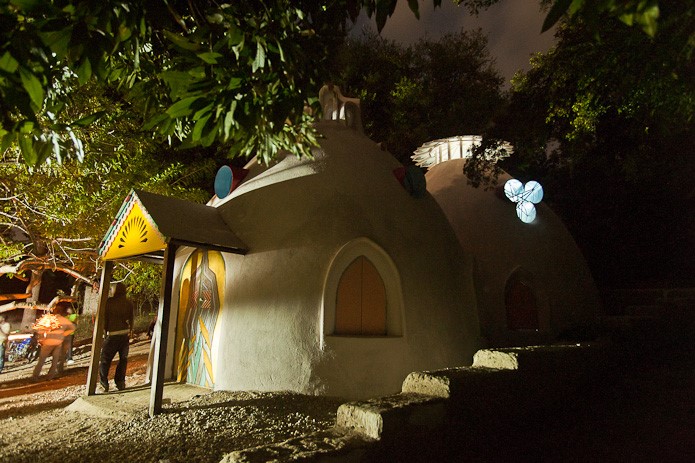
© Konbit Shelter
Organizations like Konbit Shelter (“konbit” means communal effort in Creole) are partnering international artists, builders, architects, and engineers with local artisans and builders to create durable and low-tech earthbag structures that can be tailored to fit each community’s needs:
This system of building provides an easily replicable model, which can be built without using specialized construction machinery and can be participated in by the men and women of any community. Utilizing 90% earth, and only 10% cement, these structures are stronger than the now common cinder block and concrete slab construction. The technique also uses little to no wood, an invaluable asset in timber depleted Haiti.
To see video at source re:
Timber is not the only thing that is difficult to obtain; even the process of finding suitable polypropylene bagging for earthbag building in Haiti was a bit of a headache, as one of Konbit Shelter’s members chronicles in a post about one of their local suppliers.
Despite all the hurdles, Konbit Shelter recently completed a community center in the village of Bigones in 2011 (seen above), and from the looks of the photos showing the building process on Konbit’s blog, it was an inspiring cooperative effort for all involved, not to mention the lovely structure that was ultimately created.
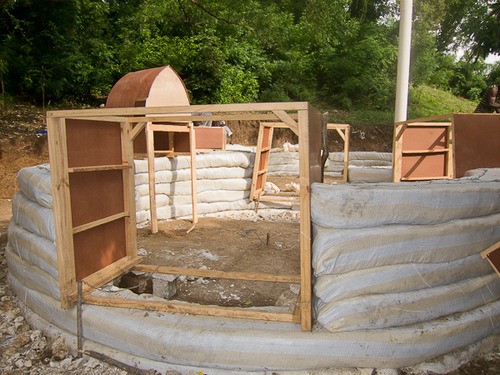
© Konbit Shelter
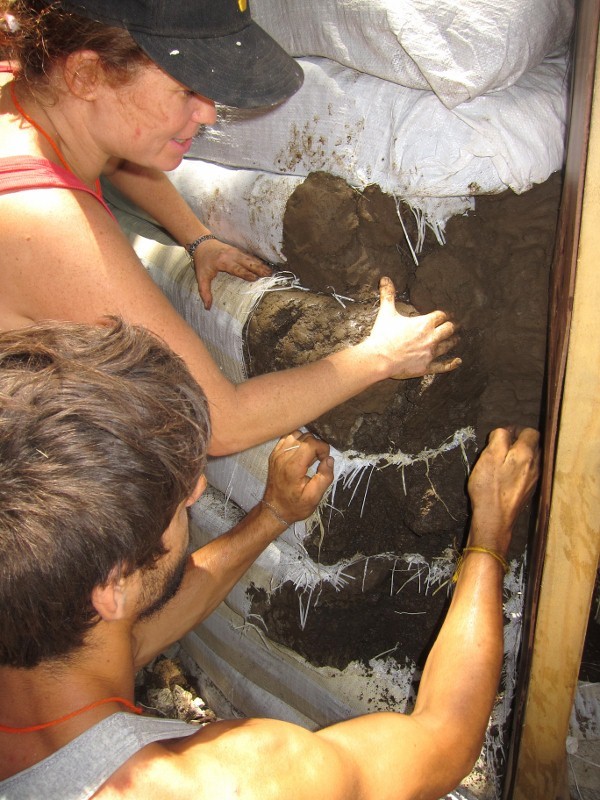
© Konbit Shelter
One of the supports for the main windows was made from welded oil drums — a beautiful example of adaptive reuse.
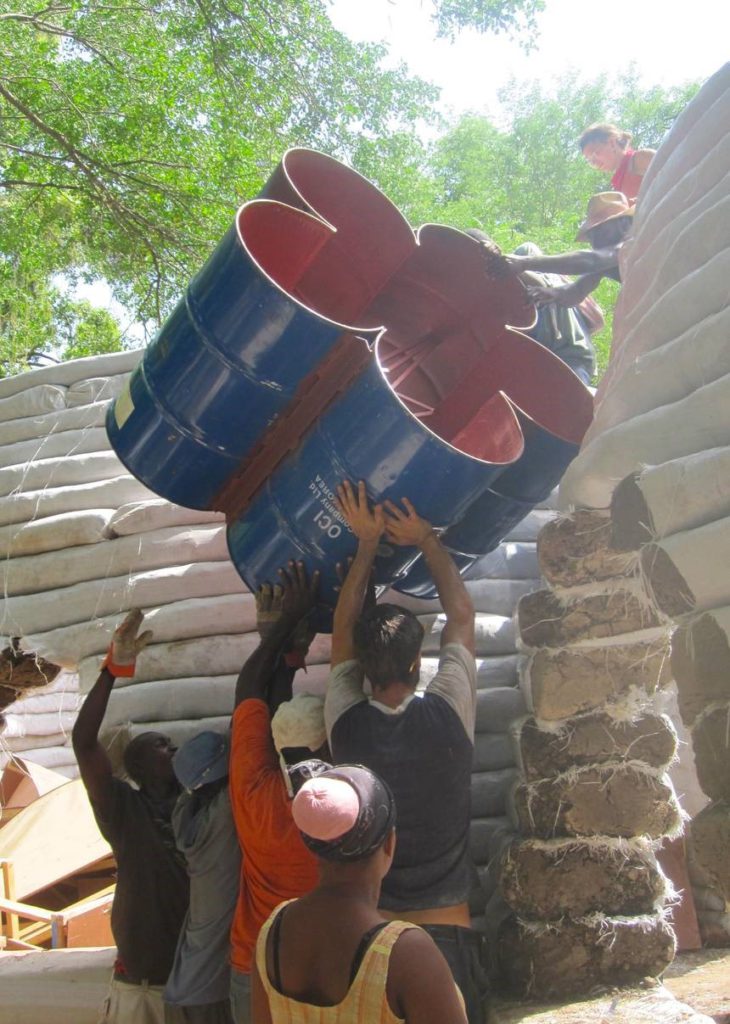
1© Konbit Shelter
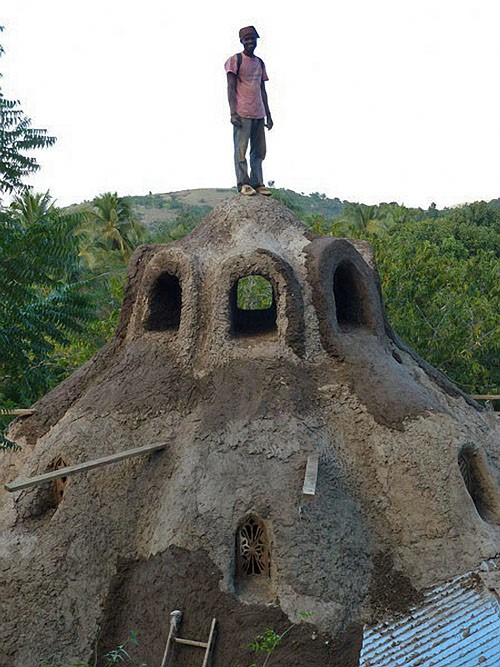
© Konbit Shelter
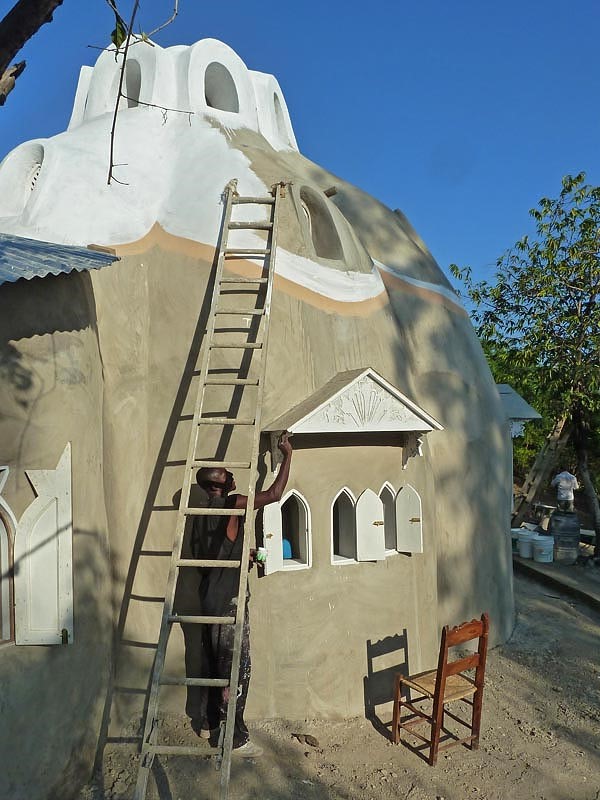
© Konbit Shelter
Thanks to a successful Kickstarter campaign raising over $30,000, they’re returning this January to build another house; keep track of the upcoming details on Konbit Shelter’s site and blog.
